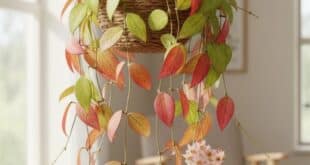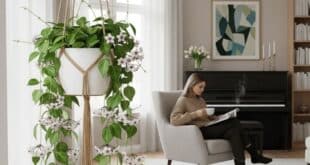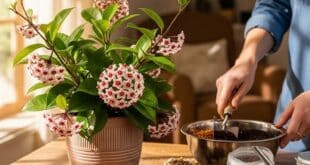Meet The Hoya Rope Plant ‘Krinkle Kurl’
If you’re looking for a houseplant that doubles as a piece of living sculpture, look no further than the Hoya Rope Plant. With its tightly curled leaves that cascade in thick, rope-like chains, this plant is an unforgettable addition to any collection.
Known scientifically as Hoya carnosa ‘Compacta’ and often called the “Hindu Rope Plant” or “Krinkle Kurl,” this fascinating plant isn’t a separate species but a unique cultivar of the classic Hoya carnosa. However, its appearance is so distinct that its care comes with its own special considerations.
This guide will walk you through everything you need to know to keep your Hoya Rope Plant healthy, happy, and thriving for years to come.
What Makes the Hoya Rope Plant So Unique?
While genetically a Hoya carnosa, this plant’s charm lies in its unusual form.
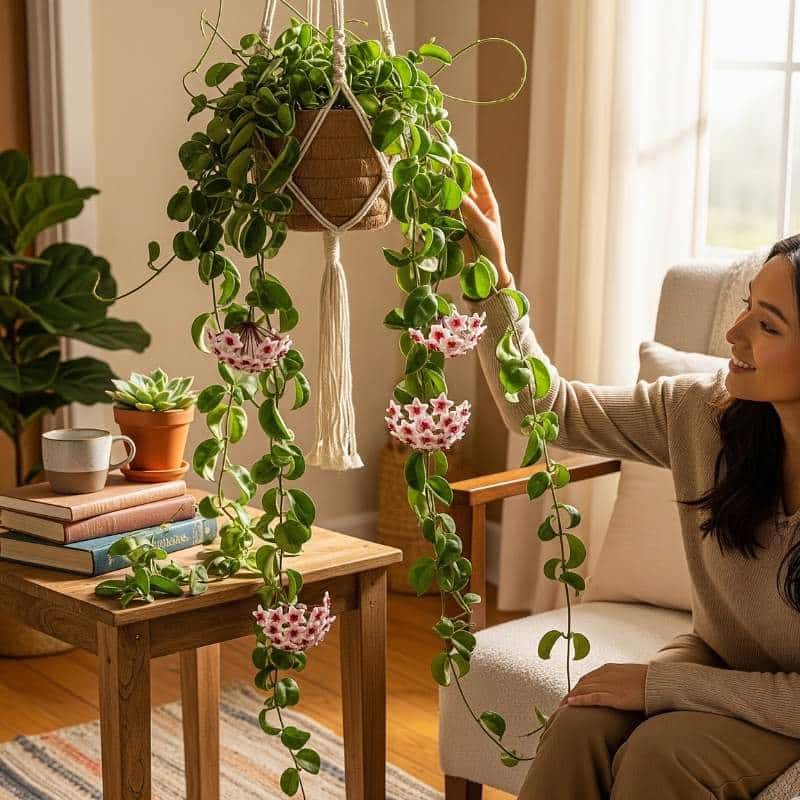
- The Sculptural Leaves: This is the main attraction. The leaves are dense, glossy, and curled inward, forming the characteristic “rope-like” appearance along the vine. This unique foliage makes it a stunning trailing plant for hanging baskets or shelves where its ropes can drape beautifully.
- The Surprise Flowers: Like its parent plant, the Hoya Rope Plant produces beautiful clusters of star-shaped, light pink flowers with a red center. These fragrant blooms often appear nestled deep within the curled leaves, making their discovery a delightful surprise.
- A Slow and Steady Grower: Patience is key with this Hoya. It is a notoriously slow grower, but this also means it won’t outgrow its space quickly and requires very infrequent repotting. Each new inch of growth feels like a true achievement.
Hoya Rope Plant vs. Other Hoyas: A Quick Comparison
To understand just how different it is, let’s compare it to the Hoyas we’ve already discussed.
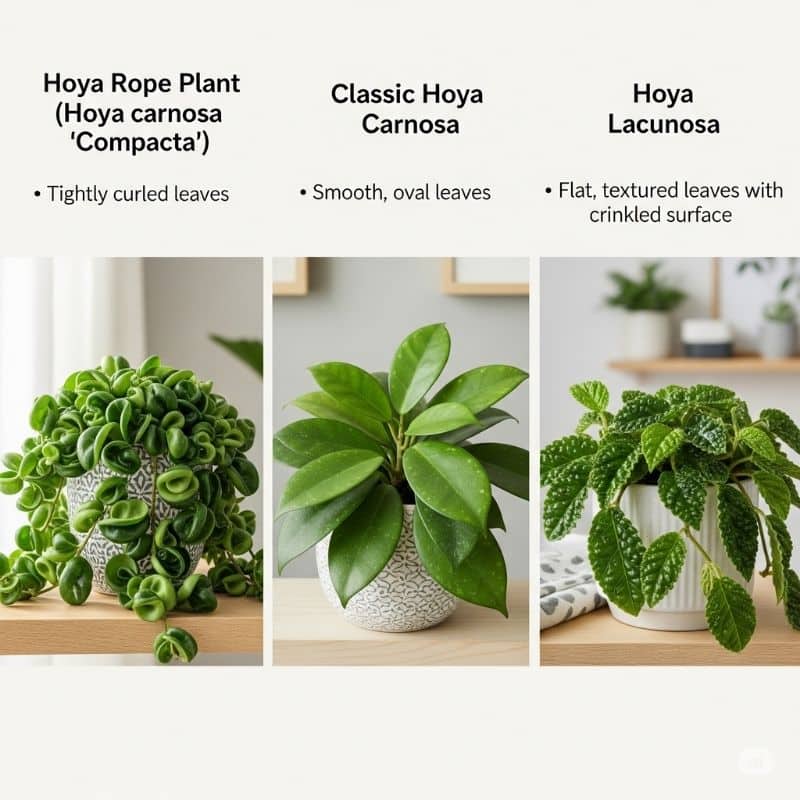
| Feature | Hoya Rope Plant (H. carnosa ‘Compacta’) | Classic Hoya Carnosa | Hoya Lacunosa |
| Leaf Shape | Curled, twisted, and closely packed together, creating a distinctive “rope-like” structure. | Smooth, flat, and oval in form. | Flat with a noticeable dimpled or textured “crinkled” surface. |
| Leaf Texture | Thick and waxy. | Thick and waxy. | Thinner and less fleshy. |
| Growth Rate | Very slow. | Moderate. | Moderately fast. |
| Key Challenge | Prone to pests hiding in leaf curls; tricky to water. | Can be slow to bloom. | Requires higher humidity to thrive. |
Hoya Rope Plant Care: Special Considerations
Its unique shape requires a slightly different approach to standard Hoya care.
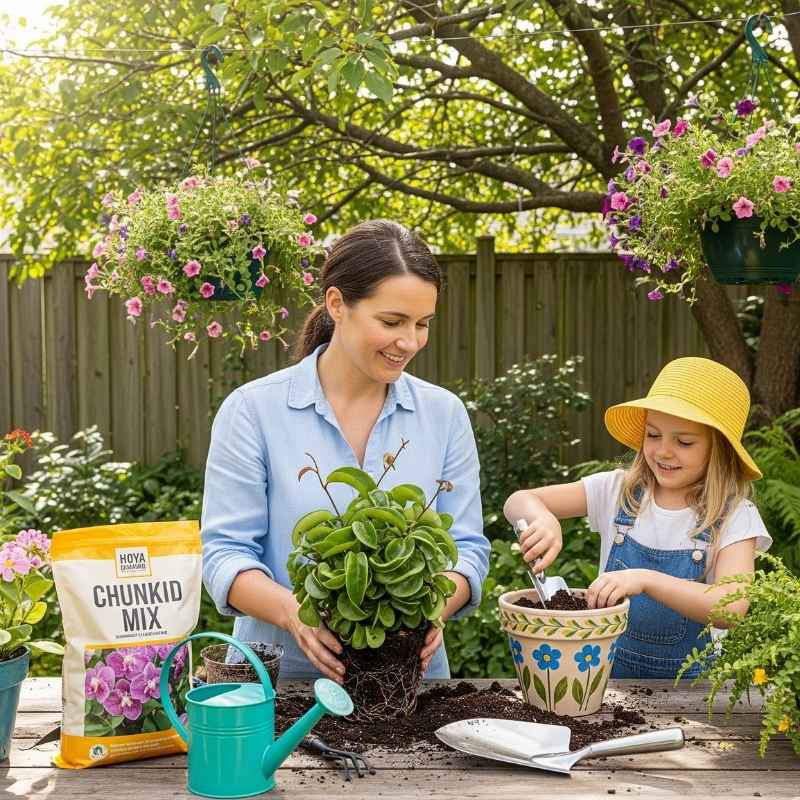
Light:
Bright and Even Your Hoya Rope Plant needs bright, indirect light to thrive. An east-facing window is perfect. While it can survive in lower light, it will grow even more slowly and is unlikely to ever bloom. Special Tip: Rotate your plant every so often to ensure all sides of the dense “ropes” get access to light.
Watering:
The Biggest Challenge This is the most critical part of Rope Plant care. Due to the tightly packed leaves, it’s difficult to see the soil and moisture can get trapped, leading to rot.
- Let it Dry Out: Water only when the soil is significantly dry. You can gauge the pot’s weight or use a moisture meter to check the soil. Additionally, the leaves might feel a bit less firm to the touch.
- Bottom Watering: Many plant owners opt for bottom watering as their preferred method. Place the pot in a saucer of water for 20-30 minutes and let it soak up what it needs. This ensures the roots get water without soaking the dense foliage.
- Avoid Overwatering: This is the leading cause of death for Rope Plants. When in doubt, wait another day.
Soil:
Airy and Chunky is a Must Just like other Hoyas, an extremely well-draining, airy potting mix is non-negotiable. An orchid or aroid mix is ideal. This is even more important for the Rope Plant to counteract the risk of moisture getting trapped in its foliage.
Humidity and Temperature:
Standard Tropical Comfort It loves high humidity (50-60%+) and stable room temperatures between 18-27°C (65-80°F). Keep it away from cold drafts and heating vents.
Fertilizing:
Less is More As a very slow grower, the Hoya Rope Plant doesn’t need much fertilizer. Provide a diluted balanced fertilizer every 4-6 weeks during the spring and summer growth period only.
Troubleshooting Common Issues
The Rope Plant’s structure makes it prone to a few specific problems.
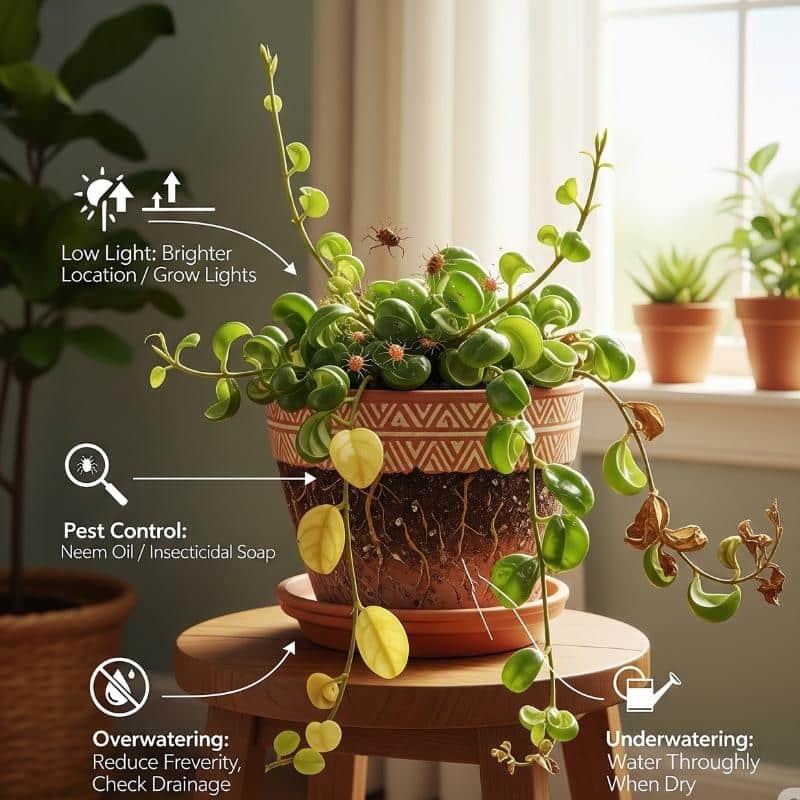
| Observed Problem | Possible Cause(s) | How to Fix It |
| Pests (White fuzzy spots, sticky residue) | Mealybugs and aphids love hiding in the tight leaf curls. This is the plant’s biggest weakness. | Be vigilant! Inspect the crevices regularly. At the first sign, spray thoroughly with insecticidal soap or neem oil, ensuring you get into all the hidden spots. |
| Yellowing Leaves / Mushy Stem | Overwatering / Root Rot. Water is trapped in the dense foliage or soil. | Immediately stop watering. Check the roots for rot. You may need to repot in fresh, dry soil and be much more cautious with watering going forward. |
| Shriveled or Wrinkled Leaves | Underwatering. The plant has used up its water reserves. | If the soil is completely dry, water the plant thoroughly, ideally using the bottom watering method. The leaves should regain their firmness within a day or two. |
| No Growth | This plant is naturally very slow-growing. Also could be insufficient light. | Be patient! As long as the plant looks healthy, slow growth is normal. If you suspect it’s a light issue, move it to a brighter location. |
Frequently Asked Questions (FAQ) about the Hoya Rope Plant
1. Why is my Hoya Rope Plant growing so slowly?
Slow growth is the normal and expected behavior for Hoya carnosa ‘Compacta’. It is one of the slowest-growing Hoyas. As long as the leaves are firm and green, your plant is likely perfectly healthy. Celebrate every new leaf!
2. How do you clean the leaves of a Hoya Rope Plant?
Cleaning can be tricky. Dust can accumulate in the crevices. The best method is to give the plant a gentle lukewarm shower every few months. This rinses the leaves without having to wipe each one individually. Let it air dry thoroughly in a well-ventilated spot.
3. Is the Hoya Rope Plant toxic to pets?
Like its parent, the Hoya carnosa, the Rope Plant is considered non-toxic to cats and dogs. It’s a safe choice for pet-friendly homes.
4. How often should I repot a Hoya Rope Plant?
Very infrequently. Because it’s a slow grower and likes to be slightly root-bound, you may only need to repot it every 3-5 years, or when you see roots coming significantly out of the drainage holes.
5. How do I get my Hoya Rope Plant to bloom?
Blooming requires maturity and the right conditions. The plant usually needs to be several years old. To encourage it, provide plenty of bright, indirect light, allow it to become slightly root-bound, and be consistent with your care. Patience is the most important factor.
A Plant Worth the Patience
While the Hoya Rope Plant may test your patience with its slow growth, its rewards are unparalleled. It’s a living work of art, a captivating conversation piece, and a celebration of the fascinating diversity within the plant kingdom.
By understanding its unique needs—especially when it comes to watering and pest prevention—you can successfully grow this incredible plant and enjoy its sculptural beauty for decades.


